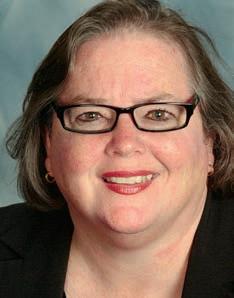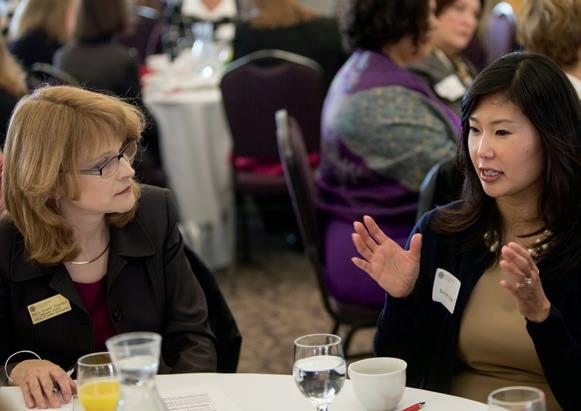
3 minute read
Census Highlights
Progress Builds Hope that Company Cultures Are Changing
Significant barriers to widespread change remain.
By Joann Bangs, Ph.D., dean, School of Business and Professional Studies & associate professor of economics By Rebecca Hawthorne, Ph.D., associate professor and program director, Master of Arts in Organizational Leadership (MAOL) program St. Catherine University
M
innesota’s percentages of women in corporate leadership improved significantly in 2015, but reflect a small pool of women leaders. Despite years of corporate diversity initiatives, women remain underrepresented at every level of the corporate pipeline in America. Recent research by McKinsey (2015) identifies gender-based barriers to advancement and challenges obtaining senior leadership roles. The barriers include a preponderance of women in staff roles rather than at vice president levels and above; company practices and culture; and an “uneven playing field,” which ensures that gender parity remains elusive, especially at the top. Board searches that rely on personal networks, word of mouth, and a narrow definition of prerequisite leadership experience (e.g., primarily CEOs and experienced public company directors) tend to produce gender-based barriers to corporate governance. Women hold just 16 percent of the board seats at S&P 1500 companies, a proportion lower than the percentage of directors named John, Robert, James, and William in these same companies (Ernst & Young, 2015).
The business imperative for diversifying corporate leadership beyond directors named John, Robert, James, and William has been well-documented. Improved competitiveness (Deloitte, 2013), stronger financial performance (Catalyst, 2013; McKinsey & Co., 2013), improved stakeholder relations (Rhode & Packel, 2010), and more effective decision-making and increased innovation (Catalyst, 2013) are all byproducts of diverse corporate leadership. To remain competitive and forward-thinking, companies must diversify their boards and senior leadership teams to more accurately reflect their stakeholders, employees, and the shifting demographics of their customers.
The Minnesota Census of Women in Corporate Leadership annually identifies those public companies that have made strides in diversifying their boards of directors and senior leadership teams, to leverage the knowledge and skills of both talented women and men to competitive advantage. These companies drive the Minnesota economy and model diversity practices for others.
Strides forward
The eighth annual Minnesota Census of Women in Corporate Leadership reveals the most significant progress to date in diversifying Minnesota’s boardrooms and senior executive suites. Minnesota’s largest 100 public companies, with annual revenue from $0.5 million to $130 billion, reported a net increase in both women corporate directors and women executive officers in 2015. These increases reverse last year’s back steps and represent the highest percentages of women directors and executive officers during the history of the Census.
Women hold 15.5 percent of the board seats of Minnesota’s 100 largest publicly held companies, up from 14.9 percent in 2014. Although the total number of available board seats across Minnesota’s 100 largest publicly held companies is smaller than in the past, the 2015 Census recorded the largest number of women directors to date. Despite strides forward, women stepped into only 14 of the 64 new independent director positions that opened up in 2015.
Number of Minnesota Companies with Women Leaders
Women Directors
Three or more women directors Two women directors One woman director No women directors Number of Companies 15 19 32 34
Women Executive Officers
Three or more women executive officers Two women executive officers One woman executive officer No women executive officers Number of Companies 16 16 34 34
Twenty-one women of color currently serve across 19 Minnesota public companies, an increase of two women and three companies from 2014. Although encouraging, shifting demographics in Minnesota are still not reflected in the corporate leadership of 81 of Minnesota’s 100 largest publicly held companies.
Women executive officers increased by 12, and their representation in senior leadership roles (Section 16b positions) rose to 19.4 percent, the highest percentage of women executive officers on record in the survey’s tenure. The total pool of executive officer positions increased in 2015 from 630 to 638, the first increase in several years. In







